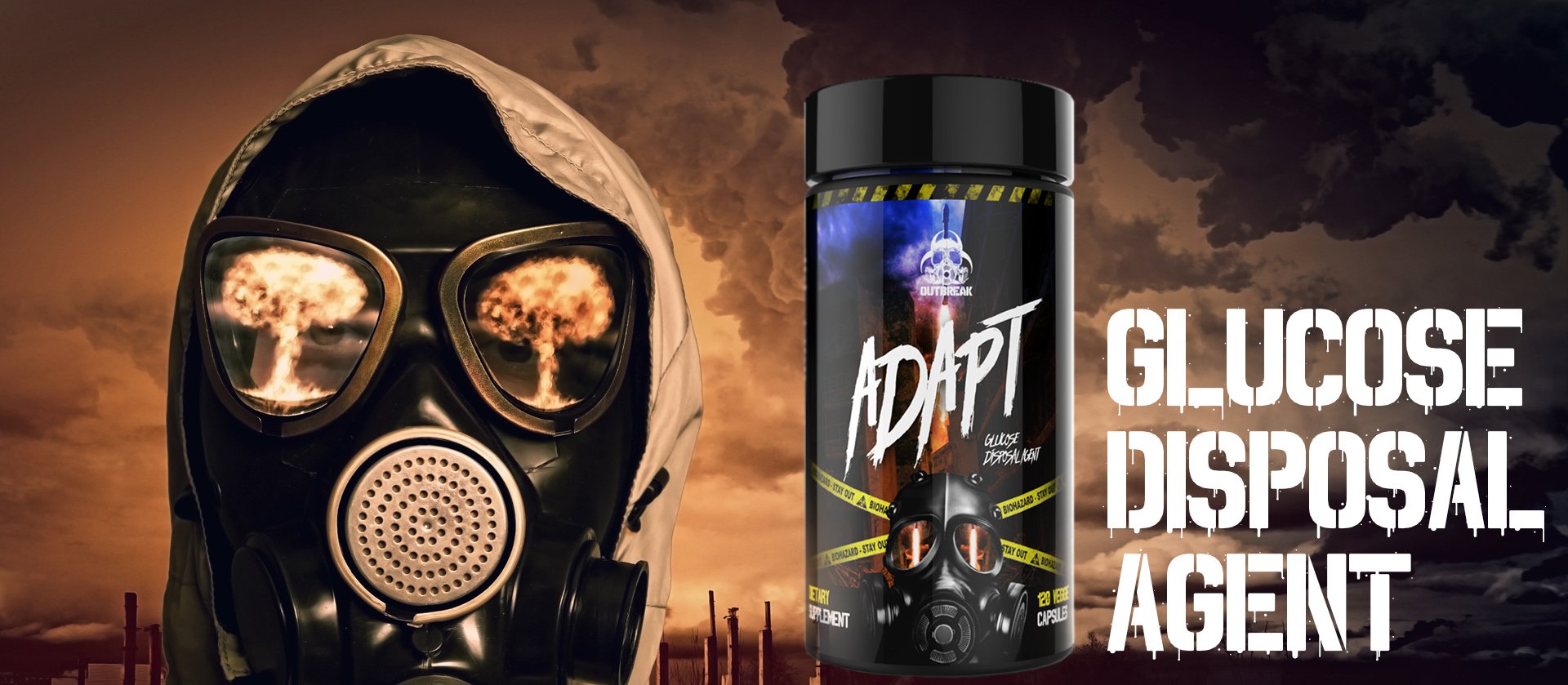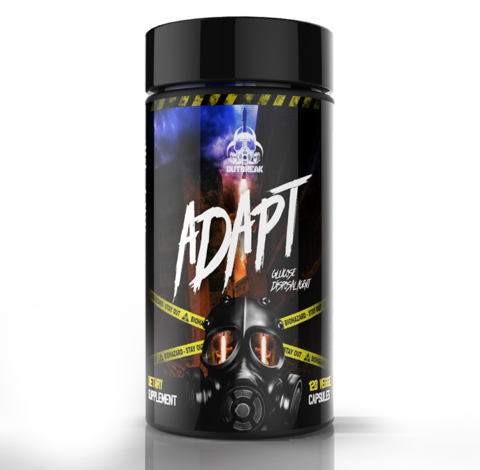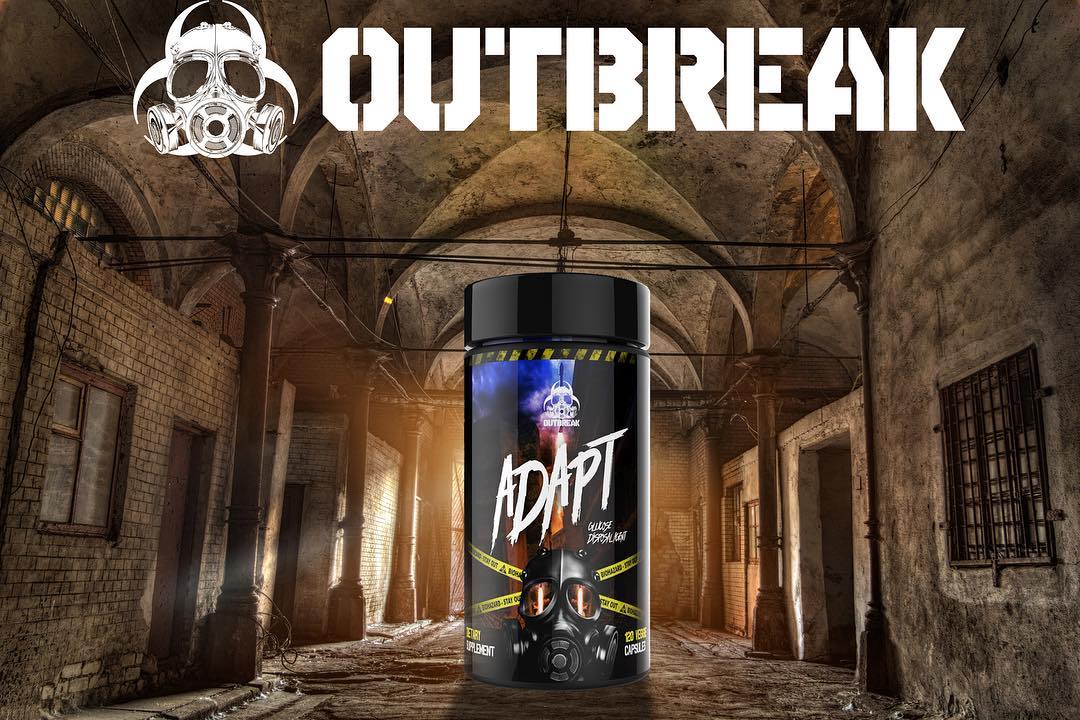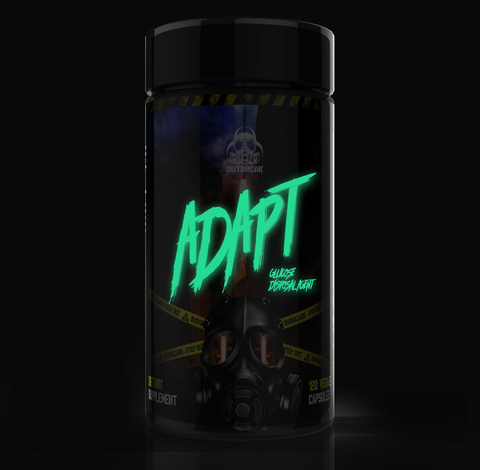Carbohydrates may be one of the most ergogenic things in our nutritional arsenal… if our body uses them correctly! Over the last few years, the we’ve explored supplements that help maximize the human body’s use of glucose for exercise performance with mixed results… until now!
What the Hell is a “GDA”?

Can’t handle carbs as well as you wish? Then it’s time to learn about Glucose Disposal Agents, or GDAs.
Our dedicated readers already know that glucose can go on a few different journeys upon digestion. As athletes, we hope that glucose will be converted into glycogen and stored near a muscle cell. However, when the body senses a surplus of glucose in the bloodstream, some sugar we consume can be converted directly to fat via de novo lipogenesis[1] or indirectly through similar metabolic processes.
A glucose disposal agent, or GDA, is a supplement designed to allocate increased glycogen stores while mitigating fat gains from glucose intake. It’s easy to imagine GDAs as “traffic cops” for macronutrients. Dietary glucose pulls up to the GDA’s intersection, and the GDA guides it on its journey to an empty glycogen store. Simply put, a GDA’s main purpose is to make sure that carbohydrates are used for performance.
Where Others Have Failed…

Outbreak Nutrition Adapt is one of the strongest GDAs we’ve ever seen, with 600mg berberine and a ‘new’ ingredient we’ve never seen in one!
While several amazing ingredients are available that help glucose mitigation, they are an afterthought in overloaded supplements. Tried-and-true ingredients like berberine are often thrown in as a bonus, not the focus point. However, Outbreak Nutrition took a different approach we at PricePlow revere so highly, we’re going to have to blood test it.
Outbreak Nutrition ADAPT attacks the competition with a pickaxe of clinical-level doses and proper formulation – using a new ingredient we’ve never before seen in a GDA! Instead of throwing in glucose disposal agents as a bonus, our favorite armageddon-oriented brand, Outbreak Nutrition, has made these ingredients the main feature.
We’ll show you that new ingredient (as well as everything else in ADAPT) with some citations, but first check out our prices, coupons, and sign up for Outbreak news alerts so you don’t miss the next zombie attack:
Outbreak Nutrition Adapt – Deals and Price Drop Alerts
Get Price Alerts
No spam, no scams.
Disclosure: PricePlow relies on pricing from stores with which we have a business relationship. We work hard to keep pricing current, but you may find a better offer.
Posts are sponsored in part by the retailers and/or brands listed on this page.
Mike’s Outbreak Nutrition ADAPT Review
This stuff works! Have no basis for comparison (yet), but at two and three capsules, Outbreak Adapt kept Mike’s blood sugar within 12 points after eating a protein bar that usually makes him spike 29 points!! See it in his video below:
Outbreak Nutrition ADAPT Ingredients:
The following doses are from a four capsule serving.

We’re about to discuss Adapt’s ingredients in four capsule doses, but honestly… we’re starting with two caps. It looks that strong.
As noted below in our dosage section, you may not need all four capsules (depending on your planned carbohydrate consumption after taking Adapt), and should start with less to assess how you feel.
-
Chromium as Nicotinate Glycinate Chelate (240mcg)
Starting off the Adapt formula is a classic GDA ingredient – one of the originals, in fact. Chromium is an essential mineral with a well-studied impact on blood glucose levels in diabetic populations.[2] While not the ingredient we’re the most excited about on this list, it’s a well-tolerated addition that takes up no space and is a bit of a no-brainer in its inclusion. Outbreak Nutrition went with its RDA and that’s all you need for the glucose partitioning impact chromium offers.
Why chelated?
Feel free to skip this side-step here, but perhaps a bigger question is why use this form of chromium as opposed to others?
As a chelated version (which has been bound to glycine and niacin), this molecule saves your body some work and theoretically enhances bioavailability. Chelation — when the body’s digestive system binds minerals to amino acids in order to transport them through the intestinal walls — is a natural process. Those amino acids are efficiently transported, but many minerals are not, so the chelation process can take advantage of those aminos as easier “carriers” for the mineral.
Unfortunately, the body isn’t always great at chelating every mineral, so an easier path is to supplement an already-chelated mineral, thus allowing for simple absorption that reduces a potential bottleneck – and that’s why we have chelated chromium here.
The research shows success with other minerals
While other chelated amino acids are definitely better absorbed in certain foods (such as iron as ferrous bisglycine chelate,[3] zinc as zinc bis-glycinate,[4] and mganesium as magnesium diglycinate[5]), there’s no specific research on chromium nicotinate glycinate chelate, but the theory still holds soundly.
-
Berberine HCl (600mg)
ADAPT TO SURVIVE. If your carbs are skyrocketing your blood sugar and going straight to fat store, it’st time to bring them back down to earth.
Berberine is one of a handful of supplements that rival pharmaceuticals with its efficacy and potency. This is a must-research ingredient for anyone interested in controlling blood sugar levels.
Reason being, the use of berberine in reducing blood glucose is at least as effective of metformin, which is perhaps the most used diabetic medication![6] Better yet, berberine may even offer anti-inflammatory properties.[7]
Including berberine shows that the experts at Outbreak Nutrition are up to date with the latest and greatest… and they’re doing at crazy doses!
High dose alert!
Before you start popping the max-dose of Adapt capsules, realize that this is twice the dosage of other strong GDAs we’ve written about in the past!! We normally see 200-300mg in a max dose. This has 600mg.
So now we know that Outbreak is serious about taking these carbs to the slaughter. We’re honestly only starting with 1 or 2 capsules because that might be all that’s needed for some people.
-
Tamarind (Tamarindus indica [Seed] ) 10:1 Extract) (500mg)
Tamarind, present as an Tamarindus indica Seed extract, is an ingredient we don’t see often. That may all change now that Outbreak has broken it out!
When investigated, Tamarind has produced significant reductions in plasma glucose levels. It may lower blood-sugar spikes that occur after carbohydrate-heavy meals.[8]
Insane results in rat-based research
Tamarind Indicus was included for its ability to transport glycogen into the muscles and other tissue. However, there’s a rat-based study where things got really interesting — diabetic rats actually started seeing their beta cells regenerate in the pancreas!![9] While not the subject here, this could have enormous implications for rats with Type 1 diabetes. In fact, the diabetic rats saw all of the baselines measured reach the same level as non diabetic rats in just 14 days!
So while that’s not been replicated in humans, there’s obviously something huge to chew on here with that study.
Per Outbreak: “Adapt Will Turn Your Body Into The Weapon You Need It To be, With A Type Of Product You Have Probably Never Heard Of!”
Note that Tamarind is often seen on labels as providing hydroxycitric acid, and even as a laxative — but that’s from the rind and/or fruit’s extract! This is a seed extract, so those constituents won’t apply here.
However, as a bonus, tamarind seed extract may manage some oxidative stress via its status as a powerful antioxidant.[10]
-
Cinnamon 10:1 Extract (500mg)
Ah, cinnamon. Cinnamon has long been a recommended addition to any diet where blood sugar control is necessary.
Reason being, cinnamon reduces fasting blood glucose levels.[11] In addition, it even helps cells use glucose more efficiently.[12] Its inclusion in a GDA is a no-brainer. ADAPT will cover your daily cinnamon dose and make sure that your body is a glucose processing machine.
What are we extracting here?
Chromium is part of cinnamon, but we already have that in this formula. Instead, most cinnamon extracts normally try to get higher levels of cinnamaldehyde. Outbreak Nutrition has told us that they’re also standardizing on cinnamic acid and 2-methoxy cinnamic acid on top of the cinnamaldehyde (we asked since it’s not specifically stated on the label).
As a 10:1 extract, this means you’ll be getting the same amount of the active constituent as 5g of cinnamon! This fits far better in a capsule, to say the least.
-
Banaba std to 1% Corosolic Acid (150mg)
If you think this formula’s impressive, wait until you see the Outbreak Nutrition Pathogen pre workout!
Banaba is an underdog in the supplement world. There are at least a few studies showing that banaba is superb at lowering blood glucose levels via inhibition of carbohydrate digestion.[13,14] There are even human trials of its efficacy![8] Banaba dosages can be a bit iffy to recommend.
Unfortunately, the optimal dose is not well defined in research as of this publication. Hopefully, Outbreak keeps up to date with the developing science and ensures that the dose of banaba in here will change if needed — at this point we really wouldn’t know if it it’s “ideal” or not because the rest of Adapt is so powerful even without it!
-
GS4 Plus (Gymnema sylvestre Extract)(400mg)
Gymnema sylvestre has been used in India for centuries now, and recent research shows they may be onto something. Gymnema helps the body absorb glucose more efficiently. Along with banaba, this an ingredient with an impressive amount of human trials supporting its efficacy,[15] and this is yet another large dose.
In that study published in 2018,
Three compounds, gymnemosides ND7-9, exerted significant stimulatory effects on the uptake of 2-NBDG in 3T3-L1 adipocyte cells and thus have potential as lead molecules for anti-diabetes agents.[15]
So it looks like researchers are really zeroing in on the constituents doing the heavy lifting, and we can perfect these already-impressive extracts over time.
GS4 Plus is a trademarked ingredient of the Sabinsa Corporation, but they do not show exactly what compounds are extracted from their Gymneva.[16]
Dosing: The Critical Factor in GDAs
First off, GDAs (especially ones as strong as Adapt) are always meant to be taken prior to a carbohydrate-laden meal. Typically, that means at least 50g carbs, but oftentimes more depending on dosage.
As mentioned above, the maximum dose of four capsules is going going to be extremely powerful, thanks to 600mg berberine coming along for the ride. In fact, at four caps, you’re looking at clinically-backed ingredients for most ingredients.
There’s no official dosing strategy provided because so much depends on your size and sensitivity. Mike will be testing this on himself with a blood glucose (and ketone) meter to see how it performs at a few different carb doses (stay tuned to our YouTube channel for more).
General ideas – your ideal dose depends on you so start light
For this reason, we’re recommending starting at light doses — two caps with 50g or more carbs (preferably complex) should help assess your status.
As an extreme maximum daily dose, a larger, more experienced male who’s crushing carbs like it’s his job can probably max out at a total of 8 caps per day, split between two 4-capsule doses that are at least six hours apart. No more than that, ever – and it’s something you’d want to build up to – not do right off the bat!
These are all general guidelines — we never recommend a low-carber, a small person, or an inexperienced user to start at a max dose. The best way to assess is to use a blood glucose meter and see how you feel after training with those carbs in you.
Conclusion and Final Impressions:

See all of our Outbreak Nutrition coupons and prices
It’s no secret we’ve been fans of Outbreak Nutrition since their launch. Their apocalyptic theme and branding is extraordinarily unique (example: you won’t find a single fitness article on their website), but even if you’re not into prepping for end-times or slaying zombies, their products are always strong and well-dosed, which is what matters to us.
ADAPT is an extremely promising supplement that is taking the GDA game to the next level, and we appreciate their introducing us to a fantastic new ingredient in Tamarind.
By packing well-dosed ingredients with actual evidence in human subjects, Outbreak has raised the bar for aggressive GDAs. But truth be told, there’s only one way to find out which GDA is best, and that’s to test it with a standard serving of carbohydrates and see what happens.
So that’s exactly what Mike’s going to do on the PricePlow YouTube channel, get subscribed and get ready to watch as we slowly test out all kinds of GDAs. But we’re going to start with ADAPT… and we better get to it before it’s too late.
Outbreak Nutrition Adapt – Deals and Price Drop Alerts
Get Price Alerts
No spam, no scams.
Disclosure: PricePlow relies on pricing from stores with which we have a business relationship. We work hard to keep pricing current, but you may find a better offer.
Posts are sponsored in part by the retailers and/or brands listed on this page.








Comments and Discussion (Powered by the PricePlow Forum)